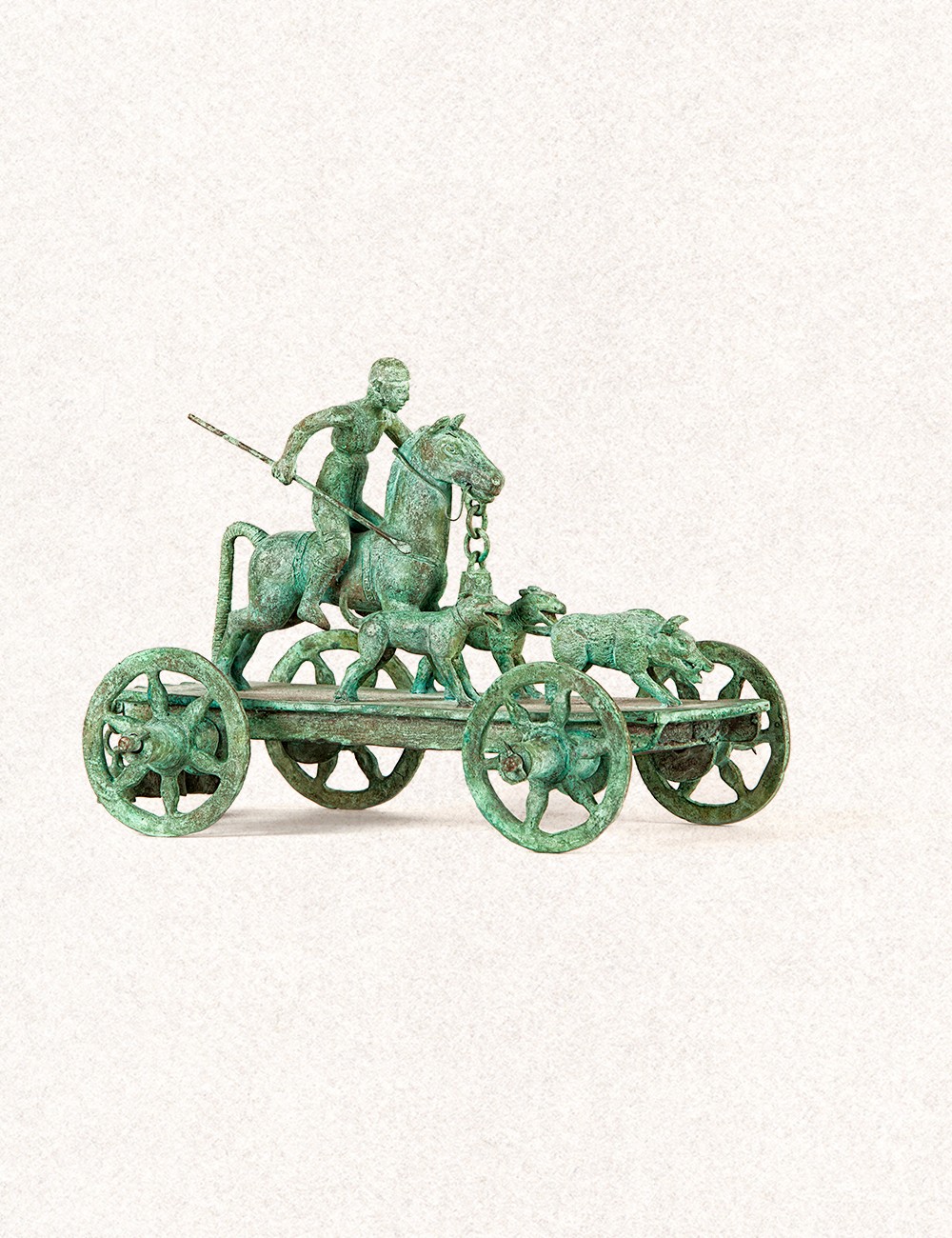
Menu
FREE SHIPPING FROM 50€ ON YOUR ORDER IN PENINSULA AND BALEARIC ISLANDS
Menu
Sculptural version of the 'Carriage of Mérida' figure. A great piece from the 6th century b.c., Iberian. The sculpture was found in the House of Meleager in Merida in a tomb, hence the votive nature. In 1930 it was ceded to the French State by R. Foret, an archaeologist. Now the original is preserved in the Museum of Saint Germain en Laye in Paris. It is a hunting scene consisting of a four -wheeled cart, on which there is a plate holding a rider with a helmet and lance, riding a horse and chasing a wild boar with the help of two dogs, one of them lost. There are five bells hanging at the back of the cart - (the original only has two) Another bell hangs from the underside of the horse. The rider is a young, vigorous, clean-shaven man with a strong head, a pointed nose and a receding chin. He wears a helmet which shows his ears and sideburns. The position of the rider and the attitude of the horse gives a sense of racing. The rider is out of his seat and leaning on the neck of the animal, with his legs drawn up and his right arm cast backward to deal a blow to the wild beast. The left arm is at the height of the horse's upright ears producing a scene of a great race. The dogs, open-mouthed and wearing collars, run alongside the horse, and the wild boar runs in front of the dogs with his tongue out. The scene is one of great liveliness and movement. The material used in the sculpture is bronze and the technique issculptural modeling and lost-wax casting.
No customer reviews for the moment.

BRONCE SCULPTURE
20 x 25,5 x 19 cm
We use third-party cookies to enhance your browsing experience, analyze site traffic and personalize content, ads. Learn more.